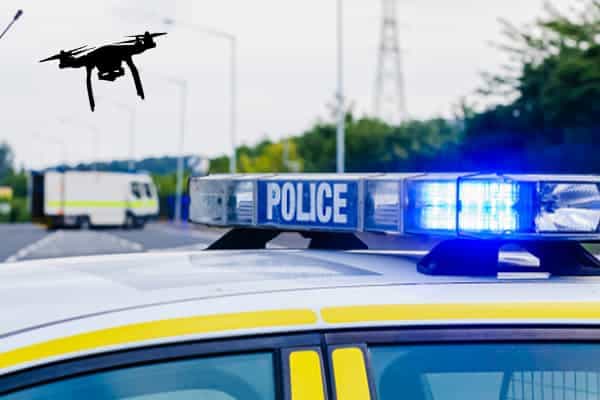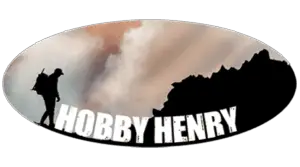
I have been travelling and flying my drone for a long time now and I have had my fair share of run-ins with law enforcement. However, I have never had my drone confiscated which made me wonder, are the police allowed to confiscate a drone?
The police are, in fact, allowed to confiscate your drone if they have reasonable suspicion that it is being used illegally or you yourself are breaking the law in that area. This is known as “Civil forfeiture.” What’s worse, is that you can even face jail time for breaking drone laws. This is why it’s so important to know your laws.
What is civil forfeiture and how can you avoid it? Keep reading to find out.
Why Can Police Legally Confiscate Your Drone?
You might have heard stories of people getting their drones seized or confiscated by police and wondered how this could happen legally. Well technically, the police are allowed to do this because of something called civil forfeiture.
Civil forfeiture is the laws and regulations that permit or allow the government to seize assets without filing charges. This legal process allows authorities to seize your personal property if they suspect that the property has been involved in a crime. This can be anything from money, cars, property and yes, in this case drones.
If the police suspect you of breaking the law with a drone or have actually caught you breaking the law with a drone, they are legally allowed to confiscate or seize your drone for an indefinite amount of time.
This legal process has raised a lot of questions as to when police should actually confiscate personal belongings.
Here’s a real-life example. A fellow drone hobbyist was flying his drone over a Winter Wonderland light show that was happening at Cal Expo when an official confiscated his Mavic Pro. Ouch!
Mark, (the pilot of the drone,) says he was flying in legal airspace and he used the FAA b4ufly app to just to make sure he was flying legally.
This, however, did not stop the Cal Expo Chief of police from confiscating his drone. If you want to see the full story, make sure you check out the video below.
Violations That Can Get Your Drone Confiscated
Drones have really grown in popularity over the years and this has also led to a lot of laws being put in place in every country all over the world.
This is why it is important to know the drone laws of your local area.
- Recreational Flying. If you are a recreational flyer or hobbyist, you are only allowed to fly your drone for hobby or recreation.
- If you are flying your drone commercially, then you need to be registered as such, and this includes if you fly your drone for monetized YouTube videos.
- Registration. If your drone weighs between 0.55 lbs and 55 lbs then you are required to register the Unmanned Aerial Vehicle(UAV) with the FAA on their DroneZone website.
- The fine for flying an unregistered drone could reach $27,500, and you could also be handed a 3 month jail sentence.
- Line-of-Sight. You need to keep your drone within visual line of site at all times while you are flying it.
- Guidelines. When flying your drone you need to follow all the community based guidelines within your area.
- Weight Limit. Unless you are certified by a community-based organization(CBO), such as the AMA, you must always fly a drone that weighs under 55 lbs.
- Other Aircraft. You must never fly your drone near other aircraft.
- Airspace. When flying your drone, you need to check which airspace you are in at all times. You should be flying it in Class G airspace. If you want to fly your drone in Class B, C, D, or E controlled airspace, you will need to apply for airspace authorization within that airspace with the Low Altitude Authorization and Notification Capability(LAANC). This is a collaboration between the FAA and the drone industry to allow pilots to fly in these restricted air spaces.
- Stay Away from Emergency Response. When flying your drone and you happen to come across emergency response efforts in your area, it is important that you stay far away from that area. Drones can be distracting and you could have a negative impact on the efforts made by officials.
- No-Fly Zones. There are a lot of places in the United States that have permanently been considered as no-fly zones. No-fly zones could be places like airports, special events, and government buildings.
- Flying Too High. A drone can fly very high, with some reaching well over 10,000 feet in the right weather conditions. You need to keep your drone below 400 feet to be flying legally in the US. If you attempt to fly over this limit then you are officially flying illegally and your drone could be confiscated by authorities if they were to catch you, or worse, you could be arrested!
Why You Should Know Your Drone Laws
It is very important to know the various laws as a drone pilot so you know where you are allowed to and where you are not allowed to fly your drone.
On top of that, law enforcement is not always correct, so it is also very important to know the law as a pilot in order to be able to defend yourself if you are wrongfully accused of flying a drone illegally.
Here is a video that may be more informative about the different rules you should be aware of when flying a drone for recreational purposes in the United States:
